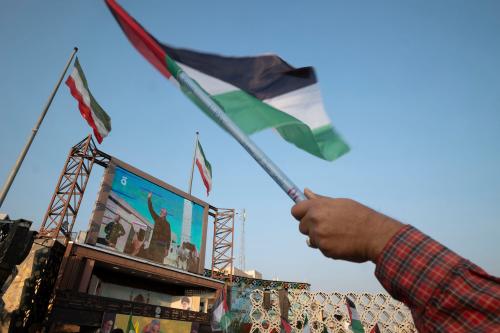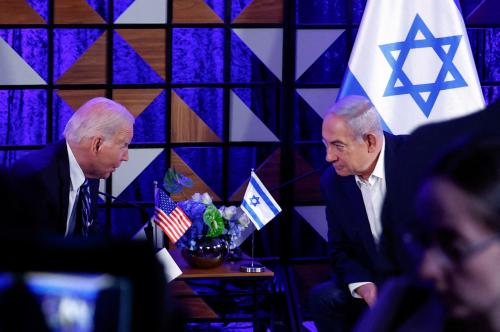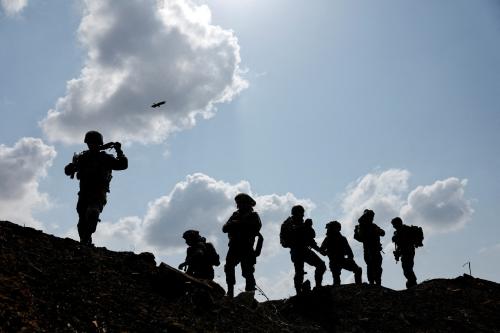On December 13, 2001, I was on the National Security Council staff at the White House when news came in that five terrorists had attacked the Indian Parliament in New Delhi. They apparently planned to murder as many of India’s senior political leaders and officials as possible. Fortunately, their timing was off, both Houses of Parliament had adjourned and the top leaders had just left, and the guards reacted promptly and killed all five of the terrorists.
It was clear to me immediately that even by the standards of modern terrorism this was an extraordinary attack. By targeting the legislature of the world’s largest democracy, the terrorists were deliberately seeking to provoke India to strike back. Had they succeeded in killing, say, Prime Minister Atal Bihari Vajpayee or Congress leader Sonia Gandhi, the terrorists would have left India with few options but to use force against the terrorists’ sponsors.
As it was, of course, India was quick to find connections between the five and Pakistan’s infamous Inter-Services Intelligence Directorate, the ISI. The five attackers were Pakistani citizens and members of the ISI-supported, if not created, Jaish-e-Mohammad (JeM) terror organisation. The JeM was founded by Maulana Masood Azhar, a long-time terrorist who was freed in December 1999 from an Indian jail in return for the release of the hostages from the hijacked Indian Airlines flight 814 taken to Kandahar by Kashmiri terrorists backed by the ISI. The ISI took Azar on a victory tour through Pakistan to raise money to create the JeM.
The case linking the JeM and the ISI to the attack on the Parliament has been made convincingly by former Indian Foreign Minister Jaswant Singh and others in their memoirs of that December day. A former head of the ISI, Javed Ashraf Qazi, later admitted that the JeM was responsible for the attack, although at the time, the Pakistani spokesman suggested it was all a put-up job by India.
Did Pakistan’s leaders really think attacking the Parliament was in their national interest? Did they not understand that a successful attack would take the subcontinent to war? As it was, India mobilised the largest military operation in its history and demanded Pakistan break all links with groups like the JeM and hand over its leaders for trial. Pakistan refused and the two countries were eyeball to eyeball for the next year, on the brink of war.
Interestingly, Pakistan’s then military dictator, General Pervez Musharraf, barely mentions the issue in his otherwise very chatty autobiography, In the Line of Fire. There is no discussion of the attack on Parliament and barely any discussion of the crisis that ensued. It is as if it never happened.
Musharraf privately told our Ambassador in Pakistan at the time that it was a very “dirty” business but never clarified what that meant. Did the ISI not tell him about the plan to attack the Parliament? Or did the ISI’s client operate outside its control for someone else?
I asked myself then and still do: who benefited from this attack? The answer is the JeM’s friend and ally, Osama bin Laden’s al-Qaeda. In December 2001, the al-Qaeda was on the run, even on the ropes. The US and allied forces had overthrown the Taliban Islamic Emirate of Afghanistan in a lightning operation. Musharraf had switched sides, at least for the time, and reversed a decade of Pakistani support for the Taliban and was promising Washington that he would help catch bin Laden and the rest of the fleeing al-Qaeda gang.
By diverting Pakistan’s army to the east, to the border with India for the next year, the Parliament attack helped save al-Qaeda. Was that the purpose of the attack or only an unintended consequence? A full-scale Indo-Pakistan war would have been even better for bin Laden, creating chaos throughout the region and giving al-Qaeda revenge for Musharraf’s betrayal.
Perhaps it was all payback for earlier cooperation between the JeM and al-Qaeda. Jaswant Singh argues in his memoirs that the IC 814 hijack was the “dress rehearsal” for al-Qaeda’s 9/11 attacks because of the close contacts between the hijackers, the ISI, the al-Qaeda and the Taliban. Ahmed Rashid has noted that bin Laden was the behind-the-scenes mastermind of the hijack and pushed for the release of the JeM’s founder. Did the JeM pay back bin Laden for his help in 1999 in 2001 by diverting the Pakistani posse away from the chase? Did the al-Qaeda play a hand in the attack plan itself?
Unfortunately, the secret probably lies in the hands of the terrorist leaders who are still at large. But it is important to see the linkages between al-Qaeda and the others. The al-Qaeda is too often seen in the West only in its Middle East dimension; its roots in South Asia are often ignored or misunderstood.
That not only leads to a weak understanding of the group, but also to policies that fail to see the complexity of the challenge of defeating the world’s first truly global terrorist organisation.



Commentary
Op-edHow 9/11 is Connected to December 13
September 11, 2008